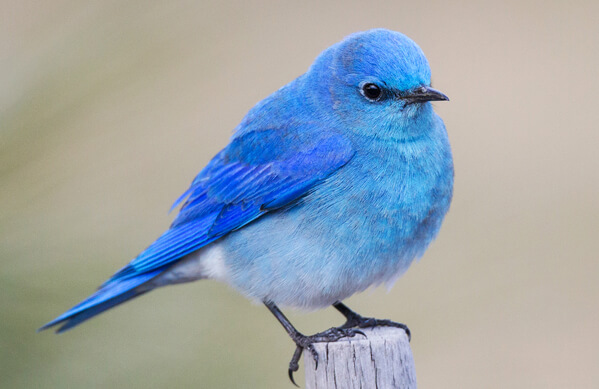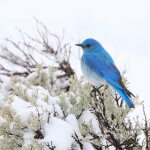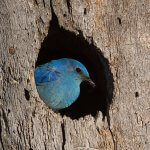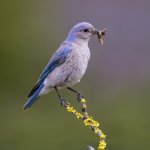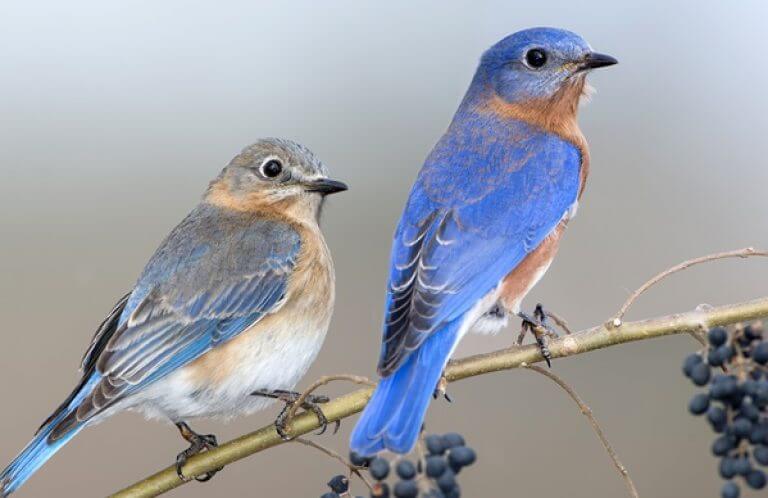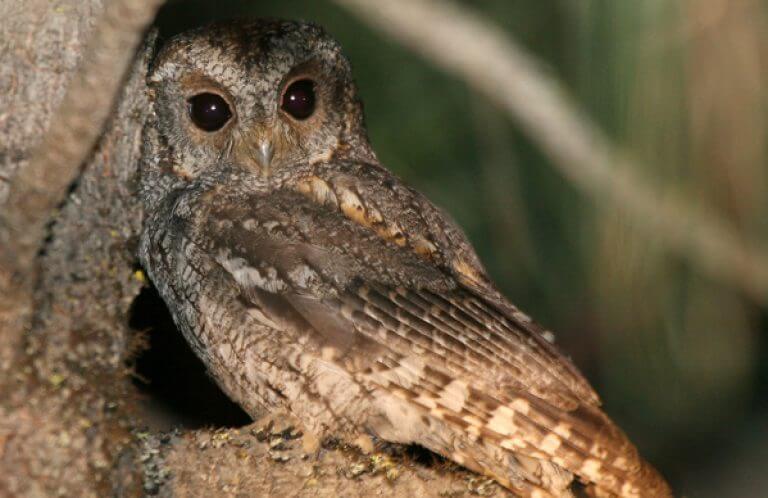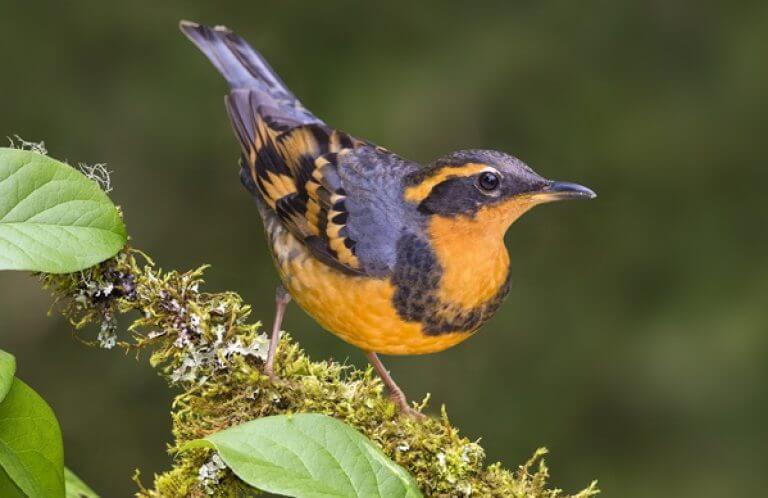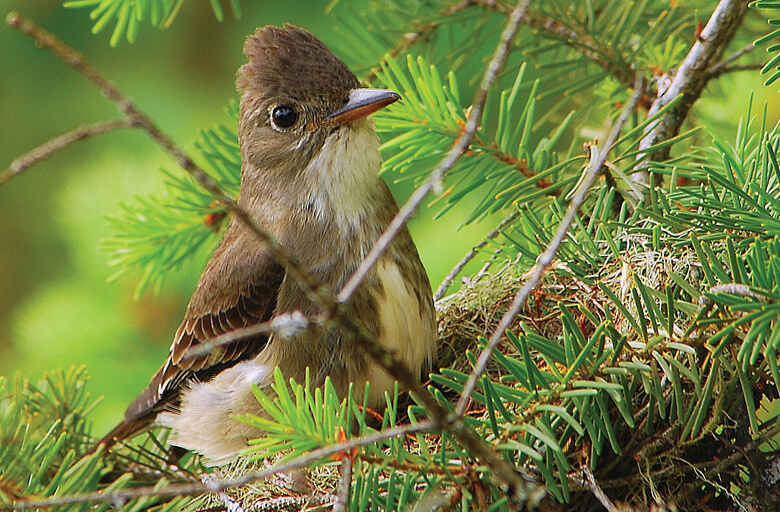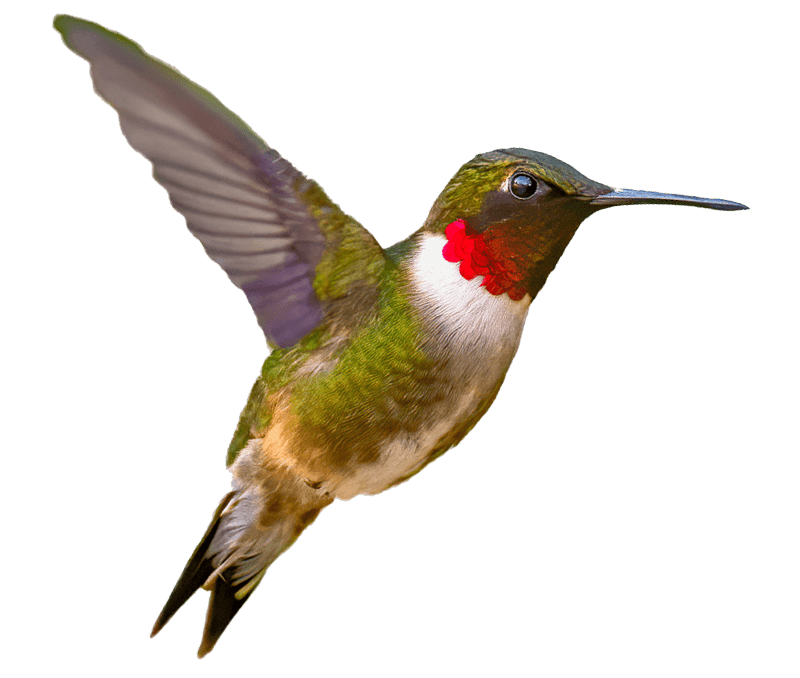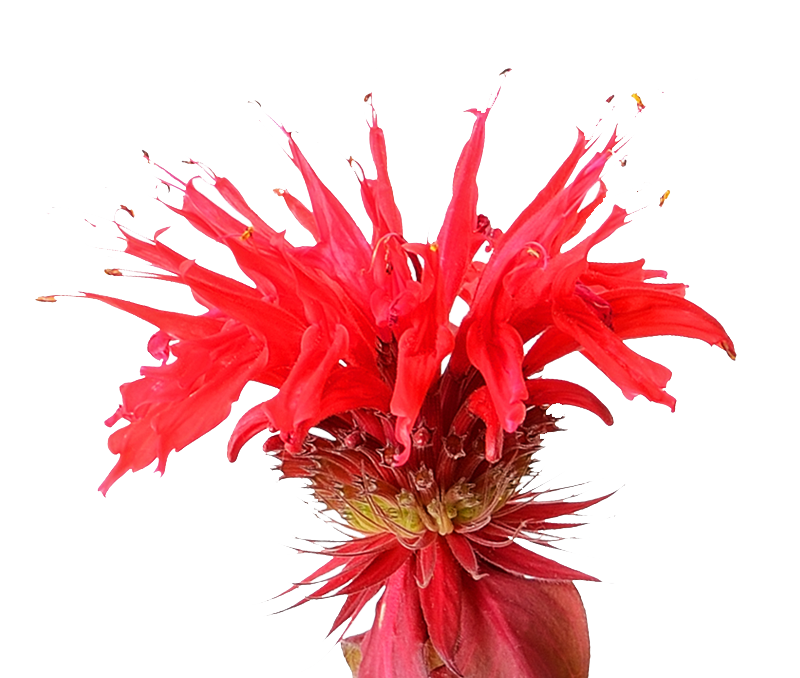About the Mountain Bluebird
The Mountain Bluebird was once called the Arctic or Ultramarine Blue-Bird — names that recognize its northerly range and the male's vivid sky-blue plumage. This small thrush, about two-thirds the size of an American Robin, is the state bird of Idaho and Nevada.
Although closely related to Eastern and Western Bluebirds, the Mountain Bluebird's habits often resemble those of very different bird species. Read on to find out which ones!
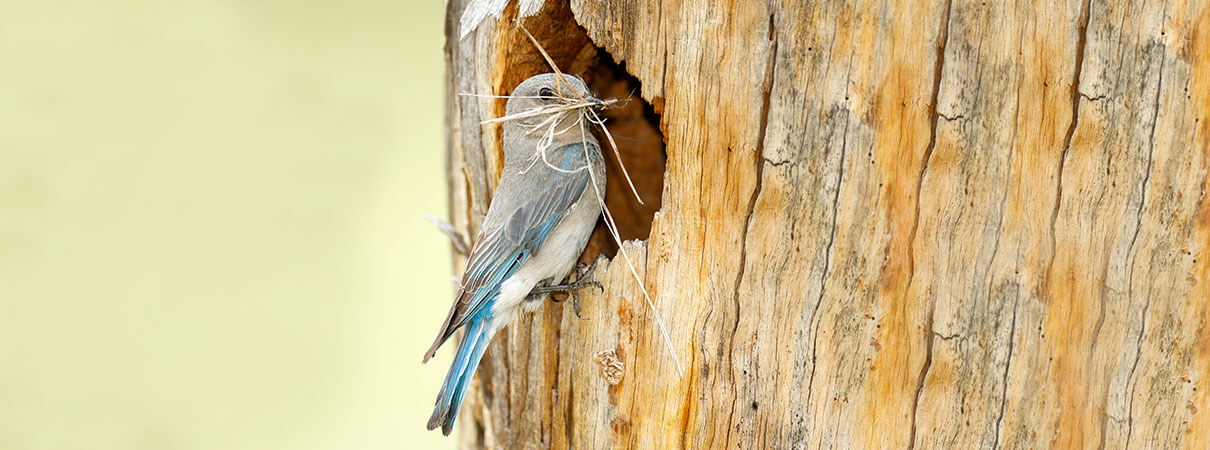
Songs and Sounds of the Mountain Bluebird
Western Bluebirds often are seen perched on fence posts or wires, singing low, warbled "tru-lee" notes.
(Audio by Andrew Spencer, XC314083. Accessible at www.xeno-canto.org/14083)
Mountain Bluebird Breeding and Feeding

Mountain Bluebirds, like the Tree Swallow and Flammulated Owl, are secondary cavity nesters, making use of natural or woodpecker-created hollows; holes in sandstone cliffs; or clay banks. They readily accept nest boxes and have benefited from bluebird nest box programs designed to boost populations where the species is declining.
The male Mountain Bluebird scouts out suitable cavities, then shows them to a female, who ultimately decides whether to accept or reject a site. After the young hatch and fledge, family groups and other individuals gather in flocks until cold weather triggers migration.
Foraging Like a Falcon
Like the Wood Thrush or Varied Thrush, the Mountain Bluebird feeds on the ground, grabbing insects and small fruits. This bluebird's diet includes more insects than most thrushes, and its feeding behavior is very un-thrush like: It hovers low over the ground and pounces, like a small American Kestrel, or darts out from a perch to snatch prey like an Olive-sided Flycatcher.
Mountain Bluebird Region and Range
Most Migratory Bluebird

Mountain Bluebirds breed in high, open country across western North America, as far north as Alaska. Usually nesting at elevations above 7,000 feet, they favor open territories year-round, including alpine meadows and clearings, as well as lower-elevation grasslands, plains, fields, farmland, pastures, and gardens.
This is the most migratory of bluebirds, with the northernmost populations migrating south and resident populations moving to lower elevations each winter. Mountain Bluebirds usually migrate in groups of up to 50 birds, frequently forming mixed flocks during the winter with Western Bluebirds, sparrows, and juncos.
Although there are no recognized subspecies, where ranges overlap, Mountain Bluebirds may hybridize with Eastern or Western Bluebirds.
Conservation of the Mountain Bluebird
Protection from Plastic Pipes

Help support ABC's conservation mission!
Partners in Flight data show that Mountain Bluebird populations have declined by 21 percent in the United States. As cavity-nesters, Mountain Bluebirds are particularly affected by the millions of PVC pipes used as mine claim markers throughout the West. Bluebirds and other species, ranging from sparrows to screech-owls, investigate these vertical pipes as potential nest sites, become trapped inside, and — unable to escape — starve or die of dehydration.
ABC has led the charge to end this threat, petitioning the Bureau of Land Management and the USDA Forest Service to remove or modify existing pipes and establish standards to prevent use of open pipes in the future.
Get Involved
Policies enacted by the U.S. Congress and federal agencies, such as the U.S. Fish and Wildlife Service, have a huge impact on America's birds. You can help shape these rules for the better by telling lawmakers to prioritize birds, bird habitat, and bird-friendly measures. To get started, visit ABC's Action Center.
Living a bird-friendly life can have an immediate impact on the birds around you. Doing so can be as easy as adding native plants to your garden, avoiding pesticides, and keeping cats indoors. To learn more, visit our Bird-Friendly Life page.
American Bird Conservancy and our Migratory Bird Joint Venture partners have improved conservation management on more than 6.4 million acres of U.S. bird habitat — an area larger than the state of Maryland — over the last ten years. This is a monumental undertaking, requiring the support of many, and you can help by making a gift today.





































